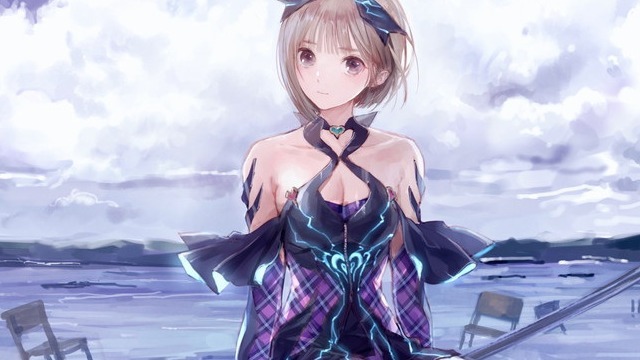

Aside from making exploration feel more rewarding, those details work nicely with a light stealth element that Second Light introduces: you can now sneak and see enemies’ fields of vision, allowing you to better prepare a surprise attack or avoid the deadly foes that sometimes block your way. If the first one is any indication, dungeons are far more intricate in their design now, with more deviating paths and alternate routes. Combat loosely follows the semi-real-time turn-based mold of the first game, with a similar focus on choosing whether to attack quickly or save up ether for bigger attacks, but there are a lot more options to play with now for both building and spending Ether, adding a layer of strategic depth to even the most simple encounters. Where Second Light stands out most from Blue Reflection is in its revamped battle system, dungeon design, and some fun new features to explore. It’s unapologetically, wonderfully queer, in a way that the first game flirted with but couldn’t quite commit to, and that’s delightful to see. Blue Reflection: Second Light just outright has Ao going on dates with her classmates to deepen those bonds, becoming more visibly intimate as they grow closer. Blue Reflection doesn’t make it overt, but the sense of romantic intimacy between some of its cast is undeniable and a crucial part of the woman-centered coming of age story that it is. And not just friendship, but love and romance. They also share an inherent femininity, in everything from the soft, gorgeous character designs to stories of empowerment through bonds of sisterhood-not the common JRPG trope of “the power of friendship”, but friendship between young women, very specifically, as they navigate the unique struggles that young women face as they grow into adulthood. Hinako and Ao’s paths are very different, but they’re going in the same direction, and I can’t wait to see how Ao’s story unfolds over the course of Blue Reflection: Second Light. In the process, they delve into the minds of the central characters and embark on a moving journey of self-reflection. Through the gambit of travelling to mysterious fantasy worlds that are a physical manifestation of people’s emotions, both games see their respective heroines fighting-literally, thanks to magical girl-style transformations-to support their friends and help them deal with whatever psychological scars they’re carrying. It’s a contrast that ties the two games together by a common thread: the search for identity, meaning, and connection that sits at the heart of Blue Reflection as a whole.
#BLUE REFLECTION FULL#
Ao’s energetic nature makes her feel constrained by a world that moves too slowly, trapped in the banality of everyday existence instead of living a life of excitement, until being whisked away to a mysterious, dreamlike world makes her long to return to the comfort she took for granted.Ī few hours with a preview build isn’t enough to get a full picture of Ao as the cornerstone of the game’s themes, but the distinction between her and Hinako-and the way they very deliberately reflect one another-is clear from the get-go. For Hinako, an injury that shattered her dream of becoming a prima ballerina left her feeling lost and isolated, frozen in time while the world flies past in a blur. They’re polar opposites, really, but different sides of the same coin. Where Blue Reflection’s protagonist Hinako is shy and reserved, someone withdrawn from the world and the people around her, Second Light’s Ao Hoshizaki is cheerful and outgoing. In a lot of ways, it sits in contrast to the first game. That’s not an easy feat for any game, let alone one as meditative as Blue Reflection-but Second Light seems to be pulling it off. Blue Reflection: Second Light is shaping up to be a sequel that doesn’t try to one-up its predecessor with new features and hover stakes (though it has plenty of both), but understands exactly what made Blue Reflection work and how a sequel can meaningfully complement that without overshadowing it. It’s also the kind of work you could quite reasonably expect to remain in solitude, never getting a sequel for fear that the magic could get lost through overexposure.Īny such concerns can be laid to rest. Intimate, heartfelt introspection on depression and trauma, seen through the empowering lens of the magical girl genre and the utter, absolute beauty of Mel Kishida’s character designs is a recipe for something truly special.


Blue Reflection was, easily, one of the most mesmerising games of the last generation.


 0 kommentar(er)
0 kommentar(er)
